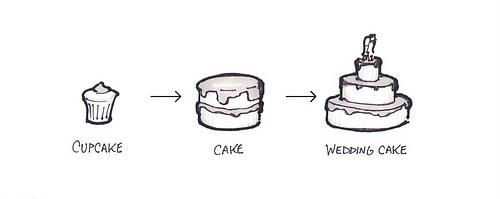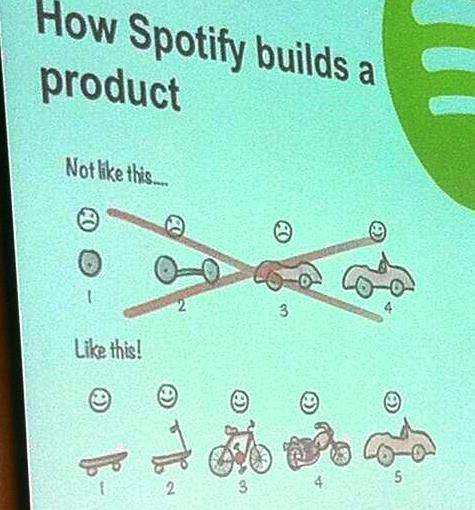Design a Minimal Product Roadmap instead of building an MVP
⭐️ a blog post
You don’t need to build everything. You might not need to build anything.
Often when advising a founder or colleague, we end up talking through what an MVP could look like. Not everyone agrees on the definition of “viable,” however, and this always creates confusion. Lately, I’ve found it useful to take a slightly different view to find a path from zero to one customer. I call it a Minimal Product Roadmap.
The different stages of a Minimal Product Roadmap should be close to (from the potential customer’s perspective):
- I understand what you want to build.
- I can use what you have built on my device. Cool.
- I can see exactly how what you have built will help me.
- I would pay for what you have built.
- I love what you have built. ❤️
The order of 4 and 5 can change depending on the product. People will pay for things they don’t love and people might not pay even tho they love it. Also your product might be free. C’est la vie.
Side-note: I have heard people say “Minimum Lovable Product” before to emphasize the importance of getting to that last step. It sounds hokey, but it makes sense.
Focusing on the core problem and finding a way to prove that your idea is the best way to solve that problem is a tough challenge. It’s even harder if you need to build every feature and implement every detail. Instead only build what can get you to the stages I listed above. And for only one problem at a time.
Laying out small steps means you can get feedback at each step, possibly re-evaluate where you are headed, then arrive at a better place in the end. Getting feedback is crucial to building any product. Having a small plan of small steps means you will start getting feedback much sooner. You might end up building three, four, or more versions before arriving at one that is understandable, usable, and lovable.
So many MVPs should be a Google Form that inserts a row into a Spreadsheet. The founders should have a separate tab with charts and graphs for their “analytics dashboard.” Google Docs has an API and you can hit it with javascript to build a frontend. Need something fancier? Then use Wufoo. Wufoo can even accept payments, provide tracking and analytics, and basically be your “customer database.”
Sure, lots of ideas are bigger than a web form, but they are probably not as big as you are thinking right now. It is one of the most difficult initial challenges for a founder to stay small, to resist building that extra thing, to instead polish the one feature you truly need until it’s the best it could be. I suffer from this all the time too, “I need to do this and this and this before anyone will get it!” It’s just not true: you don’t need to do everything. It’s easy to procrastinate by doing some easy work, like designing more and more screens, and avoiding the hard work of building a lovable solution to a single hard problem.
Adaptive Path has talked about the “cupcake model” which is a great way to visualize this:

I love this analogy because a cupcake can be super detailed if one wanted. A cupcake can be something a customer loves and pays for without being full-size. You don’t need to build the cake, just build the smallest amazing bite. A cupcake place in Washington DC I used to frequent sells “icing shots.” Can you build the icing shot version of your product? Give your customers a hit of sugar as soon as you can. And don’t waste your time building a large vanilla sponge cake with no icing or decoration, that’s not lovable.
You’ve probably seen a graphic or two showing the progression from a skateboard to a bicycle to a car, instead of building a wheel then axle then body, etc. The first time I saw it was from Spotify:

This is also a great way to reorient how you think. Maybe your startup is about “moving people from point A to B” and so you start building a car. However, a skateboard fulfills your mission statement, so why build a whole car? Are you about cars or about “personal transportation?” Maybe your customers want to get some exercise? Maybe your customers want to rent the vehicle and not own? Maybe your customers have to provide some elbow-grease at first to help you along at first? That’s fine. You cannot learn what your customers really want until you are in front of them. A Minimal Product Roadmap gets you in front of them faster.
And, more selfishly, it feels much better to ship an amazing cupcake than a mediocre full-size cake. Receiving positive, loving customer emails is a great motivator, especially when it’s early and everything is super uphill. Be encouraged: it’s possible to think small, to build something minimal and lovable, and to have fun doing it. 😀
I love talking to and advising early startups and helping them design a Minimal Product Roadmap. If you wanna chat then reach out to me. Also, if you have any feedback or criticism about this article then shoot me an email.
🏁